I found a small piece of Paris in Brisbane this morning. Today is Saturday and a usual sports day for our household. After dropping my daughter at hockey and my son at soccer, I gave myself a treat - I went to Chouquette Boulangerie Patisserie for coffee and ... whatever I could find there this morning. It was a year ago when it has just been open that I last went there ... on the recommendation of my gay friend, the seamster. He has not been well, and I have not been able to see him.
The pretty girl at the counter greeted me bonjour! I didn't know what to respond. She told me their Baguette Traditionelle and Rustique are sourdoughs (spiked with just 0.2% of yeast). I bought one each of those, and a Fougasse aux olive. At A$3.80 (US$3.20), A$4.00 (US$3.30), and A$4.50 (US$3.75) per piece, respectively, they are a good deal.
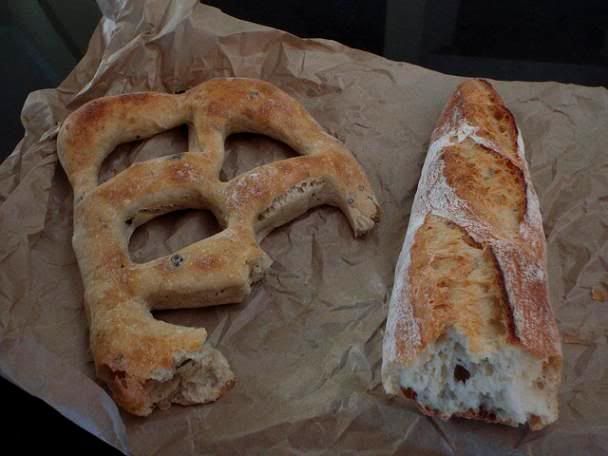
Baguette Traditionelle and Fougasse aux olive from Chouquette Boulangerie Patisserie, Brisbane
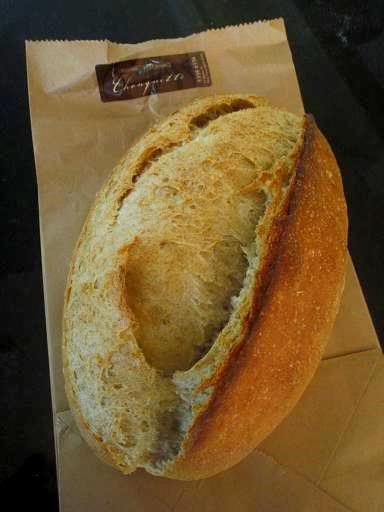
Rustique from Chouquette Boulangerie Patisserie, Brisbane
Both the baguette and fougasse have light texture and flavourful crumbs. With the Parisian music in the background, munching on my baguette and gazing at the sunny spot just in front of me, I was thinking all that I need is a lovely flowering tree to make this scene perfect. I picked up a book from their bookshelf, Pains de Campagne by Gerard Alle and Gilles Pouliquen , and when I saw this picture I decided I would blog it:
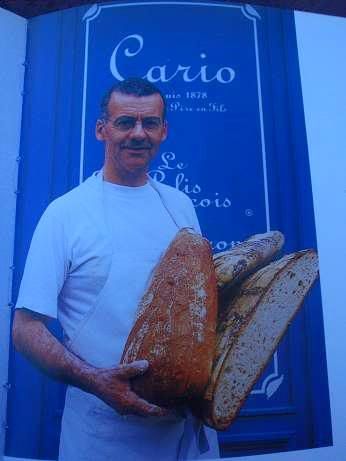
Georges Cario, Renac, France (page 103 of the above book)
David, the man's bread (the cut one on the right) looks like 5 times the size of your Miche, Pointe-a-Calliere (or, to put it another way, your Miche, Pointe-a-Calliere is a mini version of his!). And, check out these giant loaves from the village bakers (I love it!):

page 51 of the above book
and these worn baskets:
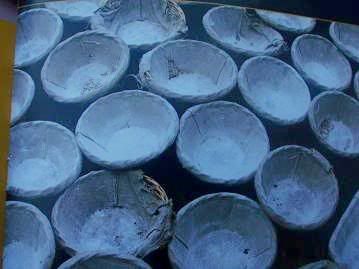
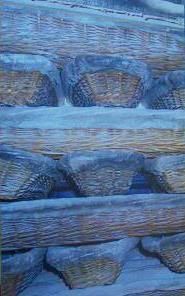
How do you get these holes?
I once threw away my husband's 15-year old straw hat, full of holes; and he wouldn't talk to me for a week. I said what's the big deal; it's so worn out and torn. He said that's precisely it - it takes years and years for a hat to be torn like that!
He picked up our son from soccer, his last game of the season. They won today's game 3-1. With today' win, they won the premiership, and he is a happy Vegemite.
I collected our daughter. Her team won 2-0, but she said she played poorly (too much on her mind - the burden of senior year before university!). I told her about Chouquette Boulangerie Patisserie and that all their bakers are from Paris and so are the girls serving at the counter. One of the girls even told me that her husband, a baker there, came here last October (and so did she) on a two year contract. So, there you go.
I said to my daughter the girl said bonjour to me, and I didn't know what to say. She said, you say bonjour back, or Bonne Matin!
So, Bonjour to you all!
Shiao-Ping
p.s. The boys had a steak sandwich each at the soccer match but were still hungry when they got home. My son had the leftover fougasse dipped in olive oil and my husband wanted a sandwich of some sort. I sliced open the Baguette Traditionelle, pretty handsome looking crumbs:
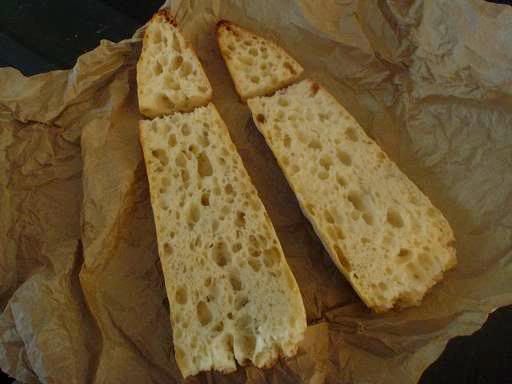
I had no cold meats in the house, so I made him a salad sandwich with pesto sauce:
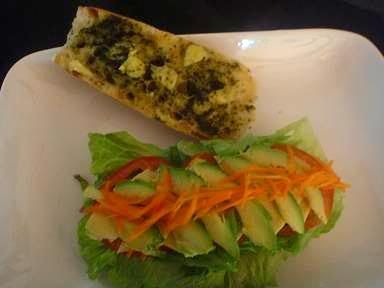
All are happy.